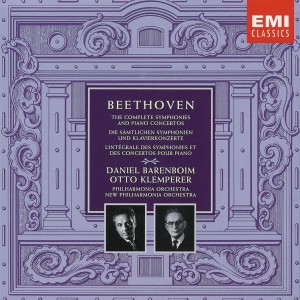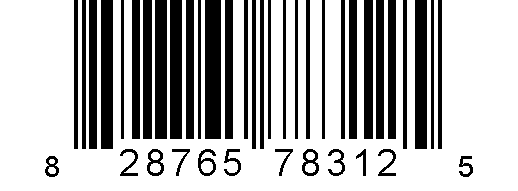Ludwig van Beethoven
The Creatures of Prometheus, op.43
Media Review / Listening Diary 2013-11-09
2013-11-09 — Original posting (on Blogger)
2014-11-09 — Re-posting as is (WordPress)
2016-07-13 — Brushed up for better readability
Table of Contents
Ludwig van Beethoven (1770 – 1827): The Creatures of Prometheus, op.43
The CDs
Thomas Dausgaard, Swedish Chamber Orchestra Örebro
Beethoven: The Creatures of Prometheus, op.43; 12 Menuets, WoO 7; 12 German Dances, WoO 8
Thomas Dausgaard, Swedish Chamber Orchestra Örebro
Simax PSC 1284 (2 CDs, stereo); ℗ / © 2013

Otto Klemperer, Philharmonia Orchestra
Beethoven: The Complete Symphonies and Piano Concertos; Choral Fantasia; Great Fugue op.133; Overtures Leonore 1-3, Coriolan, Prometheus
Otto Klemperer, Philharmonia Orchestra, Daniel Barenboim
EMI 5 73895 2 (9 CDs, stereo); ℗ / © 2000

David Zinman, Tonhalle Orchestra Zurich
Beethoven: Complete Overtures
David Zinman, Tonhalle Orchestra Zurich
BMG / Arte Nova Classics 82876 57831 2 (2 CDs, stereo); ℗ / © 2005

Thomas Dausgaard’s Beethoven Project
I am collecting the entire series of Thomas Dausgaards recording of Beethoven’s orchestral works; the ongoing series so far covers all symphonies, most overtures, the music to “Egmont” (op.84), all concerts (except for the piano concerto #5 and the violin concert, for which only the piano version is present so far), and many, probably nearly all minor orchestral works of this composer. Throughout the series, Dausgaard is directing the Swedish Chamber Orchestra Örebro, a chamber orchestra with 38 musicians. That’s a very reasonable size for symphonic music from the classical period. For choral works with orchestra (not included here), such as Beethoven’s masses, a slightly bigger orchestra may be desirable. The soloist in the piano concerts is Boris Berezovsky.
This is volume 11 of the series, mostly devoted to Beethoven’s op.43, the music to the ballet “Die Geschöpfe des Prometheus”. A second CD (40 minutes), features the Twelve Menuets WoO 7, and the Twelve German Dances WoO 8.
I quite like Dausgaard’s Beethoven recordings: for me (as well as in reviews) he fares very well against other “classic” of recent recordings. I would count this as historically informed playing (HIP). Maybe not as radical as others, but still using light articulation, little or no (audible) vibrato, fluid tempi, transparent, but not going into extremes. It’s not a recording for the specialists only, but really recommended for all but those addicted to “classic” interpretations from the middle of the last century.
Menuets & German Dances
The two sets of dances are collections of small pieces (mostly 1 – 2 minutes each) that Beethoven composed in 1795, at the age of 25 . Nice, pleasant, small, but very well composed pieces that you will not find in many recordings. This is definitely of interest for those who want to collect the “entire Beethoven”, or as much of this composer as possible.
Music for the Ballet “The Creatures of Prometheus”, op.43
Beethoven’s Music for the Ballet”Die Geschöpfe des Prometheus“, op.43 (composed 1800-1801), is certainly of a different caliber, even though it’s not as “big” as any of the symphonies. It consists of 18 movements / segments: n overture and two acts, a little over 1 hour overall. The durations range from less than half a minute up to 7 minutes. The op.43 is rarely ever played in its entirety, even though it is very nice music (but not in “big” forms such as sonata movements). The action / scenario to the ballet is apparently lost, or only available as sketchy notes / reports. So, most of this music is unknown to the general public — with two exceptions:
- The Overture (ca. 5′) is probably played quite frequently. An excellent composition, and very virtuosic and demanding in the fast part, with lots of drive — it can almost compete with some of Rossini’s overtures!
- The Finale (ca. 6′) features the theme that Beethoven later used in the final movement of his third Symphony in E♭ major, op.55, called “Eroica”. Beethoven’s final title to that composition — completed 1804 — was “Sinfonia Eroica…composta per festeggiare il sovvenire di un grand Uomo“. The theme had previously been used in Beethoven’s 12 Contradanses, WoO 14 (1800-1802). And it also was the theme for his 15 Variations with Fugue for piano in E Flat, op.35. The latter were completed in 1802 and are usually called “Eroica Variations”, even though at that time Beethoven’s third symphony didn’t exist yet. A more appropriate name for the piano variations would therefore be “Prometheus Variations”. The coda of the Finale is also very virtuosic, similar to the Overture.
Dausgaard’s Complete Recording of op.43
On CD, I currently only have Thomas Dausgaards recording of the entire op.43, so I can’t give comparative comments here. Keep in mind that even though the entire composition lasts over an hour, it consists of numerous small episodes. So, typically, by the time you start enjoying a theme, that section is over, the next theme / segment follows. This really was meant to be the accompaniment to a ballet. However, I have three recordings of the overture to op.43, see above:
Recordings of the Overture to op.43
Otto Klemperer, Philharmonia Orchestra
Otto Klemperer and the Philharmonia Orchestra are good representatives of a typical / great interpretation from the 50’s / 60’s of the last century, featuring a large, massive orchestra.
The Performance
The opening chords in the initial Adagio are very heavy and broad, monumental — too broad and massive for me. The movement continues in a fairly slow tempo, though with careful phrasing and articulation. The Allegro part is never rushed, very well-played and balanced, overall — again the tempo is on the slower side, but this permits maintaining very careful, accurate articulation. My main criticism on this interpretation is about its excess use of legato playing: I do prefer the lighter, more transparent articulation in recent, historically informed interpretations. Also, this interpretation never really picks up drive, sometimes lacks tension (which I expect a true overture to build up!). Still, it’s a good, traditional interpretation, overall.
Rating: 3
Thomas Dausgaard, Swedish Chamber Orchestra Örebro
The interpretation by Thomas Dausgaard and the Swedish Chamber Orchestra Örebro can definitely be called historically informed, see the notes above.
The Performance
It’s the other extreme, compared to Klemperer: the opening chords are extremely short, sharp, almost like shots, although the overall tempo here isn’t much faster than Klemperer’s. But the Allegro part is the fastest in this comparison — probably only doable with the smaller orchestra size. Still, they are playing at the limit — when listening carefully, one can notice occasional, very minor coordination issues in the string parts. It’s excellent, overall, though maybe a slightly slower tempo would have made it even better. It’s transparent, light, forward-moving, with drive, obviously virtuosic.
Rating: 4
David Zinman, Tonhalle Orchestra Zurich
David Zinman and the Tonhalle Orchestra Zurich offer a very good compromise between the other two interpretations.
This is definitely the bigger orchestra than the Swedish Chamber Orchestra. But this ensemble has profited from numerous encounters with conductors such as Nikolaus Harnoncourt, Frans Brüggen and others, and David Zinman has taken up these tendencies. His Beethoven interpretations are close to historically informed, though not strict.
They do use brass instruments with narrow bore (with their brighter, lighter sound). The timpanist uses wooden sticks. The articulation is light — and the orchestra is one of the most virtuosic ensembles in Europe, I think. This is not a chauvinist statement — I have known this ensemble for a long time, and if one could compare performances from 40 years ago and today, it would sound like night and day! Where the strings were muddy and inconspicuous, their sound and precision now is stunning, the wind instruments are world-class. It’s for good reasons that Zinman’s Beethoven series has been widely acclaimed as excellent.
The Performance
The opening chords are short, but not quite as sharp as Dausgaard’s, and I like the wind voices that follow these chords. Where this interpretation really excels is in the Allegro part: the tempo here is about the same as Dausgaard’s — but despite the larger number of string players, the precision, coordination and transparency is simply a class better than that of the Swedish Chamber Orchestra. The wind instruments (especially the woodwinds) exhibit very nice tonal colors, all simply excellent.
If you are looking for the “hair in the soup”: one could perhaps claim that this interpretation is technical, could be more emotional — but that is criticism at a very high level, and for this particular piece (which really should mainly evoke interest / appetite for the music and the scenery that follow) I think this interpretation is much more than adequate, definitely my favorite here!
Rating: 5
Listening Diary Posts, Overview








